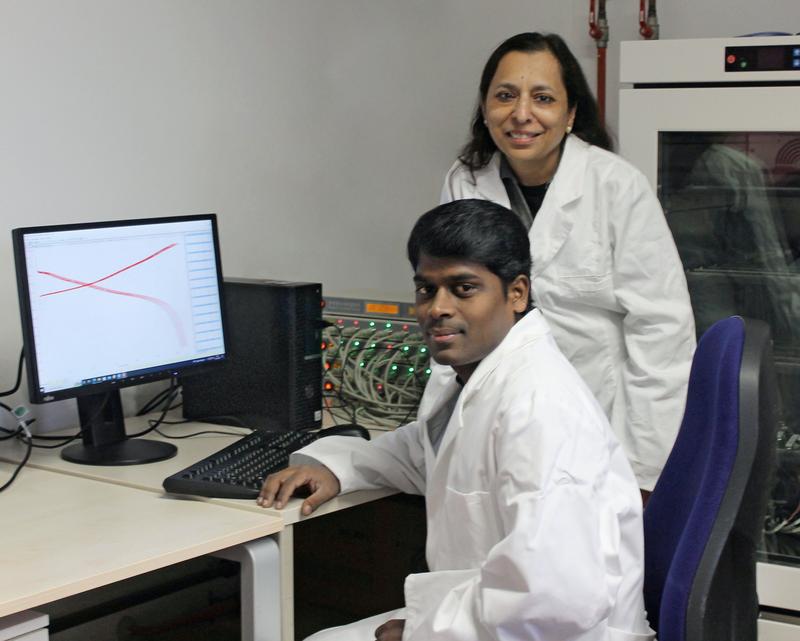The solid electrolyte that the researchers developed is a combination of a polymer and ceramic nanofibers. This composite material is applied – very much like a coating – to the porous surface of the cathode. Here, it fills the tiny cavities, forming a solid electrolyte that has stable contact with the cathode. At the same time, it is only about seven micrometres thin. Compared with earlier solid-state batteries, this new system is characterized by the fact that the electrolyte encloses the cathode particles like a shell: This creates a significantly improved interface, which has the added advantage of activating the ions in the cathode. Due to this modification, the new solid electrolyte increases the energy storage capacity of the batteries.
Another major advantage of this ultrathin solid electrolyte interacting with the cathode is that it greatly increases the operational reliability of the batteries. "Conventional lithium-ion batteries that use liquid electrolytes repeatedly cause safety problems. There is always a risk that the electrolyte will leak, causing the battery to short circuit and fail. Cell phones, laptops and electric vehicles have already caught fire because of this, causing serious accidents. An additional problem is the growing of lithium on the anode, the so-called interface dendrites, which pierce the electrolyte and can lead to a short circuit or fire. All these risks are eliminated or at least significantly reduced by our ultra-thin composite solid electrolyte, which has high thermal stability," explains Prof. Dr. Seema Agarwal, Professor of Macromolecular Chemistry at the University of Bayreuth.
The lead author of the new study, Dr. Sivaraj Pazhaniswamy, points to another advantage: "If a thermally stable solid electrolyte is used instead of a flammable liquid electrolyte, it is possible to take full advantage of lithium as an anode material. Compared to other materials used in conventional liquid electrolyte batteries, lithium has highly attractive properties, such as high theoretical capacity and low electrochemical potential. Now that our new solid electrolyte has performed so excellently in its interactions with the cathode, we want to work toward optimizing the contacts between electrolyte and anode with a similar system." The Bayreuth macromolecular physicist is a member of Prof. Agarwal's research group carrying out research on solid-state batteries under the framework of the Bayreuth Center for Battery Technology (BayBatt).
International cooperation:
In developing and testing the new solid electrolyte, the Bayreuth team collaborated with research partners at the University of Chemistry and Technology in Prague and the Jiangxi Normal University in Nanchang, China.
Contact for scientific information:
Prof. Dr. Seema Agarwal
Macromolecular Chemistry II
University of Bayreuth
Phone: +49 (0)921 55-3397
E-mail: agarwal@uni-bayreuth.de
Original publication:
S. Pazhaniswamy et al: Hybrid Polymer Electrolyte Encased Cathode Particles Interface-Based Core-Shell Structure for High-Performance Room Temperature All-Solid-State Batteries. Advanced Energy Materials (2022), DOI: https://dx.doi.org/10.1002/aenm.202202981




